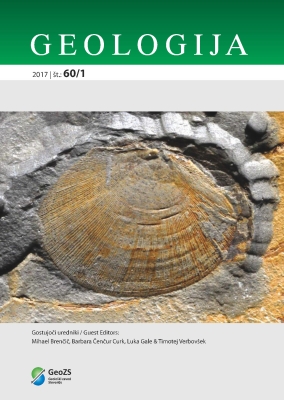Ranljivost podzemne vode glede na nitratno onesnaženje v aluvialnih vodonosnikih
DOI:
https://doi.org/10.5474/geologija.2017.002Povzetek
Članek predstavlja nadgrajen pristop ocenjevanja ranljivosti na nitratno onesnaženje podzemnih voda. Ob uporabi rezultatov terenskih meritev in izhodov fizikalno zasnovanih modelov avtor upošteva tudi učinke dušikovih biogeokemičnih procesov, ki so bili v dosedanjih ocenjevalnih shemah podcenjeni. Nadgrajen metodološki samopotrditveni pristop ocenjevanja ranljivosti podzemne vode na primeru Spodnje Savinjske doline zvišuje zanesljivost in učinkovitost odločanja pri upravljanju voda. V ta namen so bili izhodi procesno zasnovanih modelov uporabljeni v novih prostorskih klasifikacijskih shemah, ki omogočajo napoved verjetnosti pojava onesnaženja. Z modelom teže evidenc WofE je bila ocenjena verjetnost pojava z nitratom onesnažene podzemne vode v študijsko izbranem aluvialnem vodonosniku. Povišana stopnja verjetnosti onesnažene podzemne vode z nitratom je bila ugotovljena na 62,5 odstotkih območja vodonosnika Spodnje Savinjske doline. Na okoli 27 odstotkih najbolj ranljivih območij Spodnje Savinjske doline so za zmanjšanje onesnaženosti podzemne vode z nitrati potrebni ukrepi na področju rabe prostora in izgradnje sistema odvodnje komunalne odpadne vode.Prenosi
Kako citirati
Uhan, J. (2017). Ranljivost podzemne vode glede na nitratno onesnaženje v aluvialnih vodonosnikih. Geologija, 60(1), 27–35. https://doi.org/10.5474/geologija.2017.002
Številka
Rubrika
Članki

